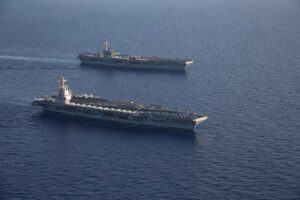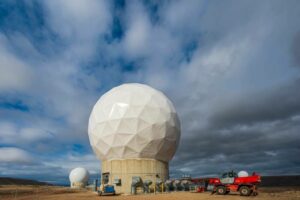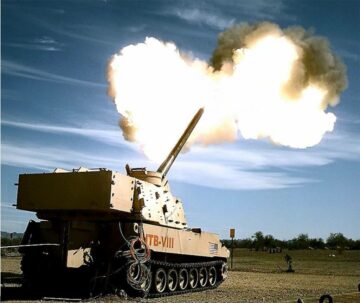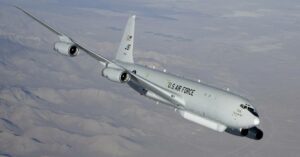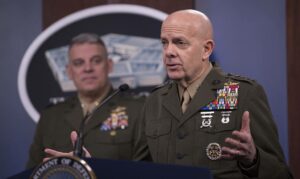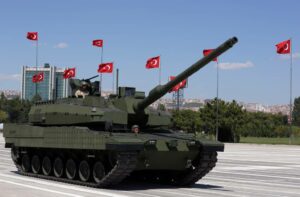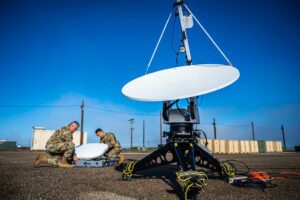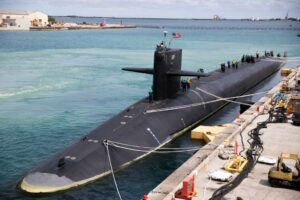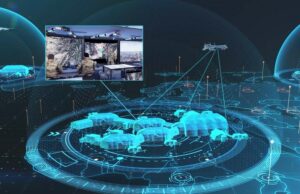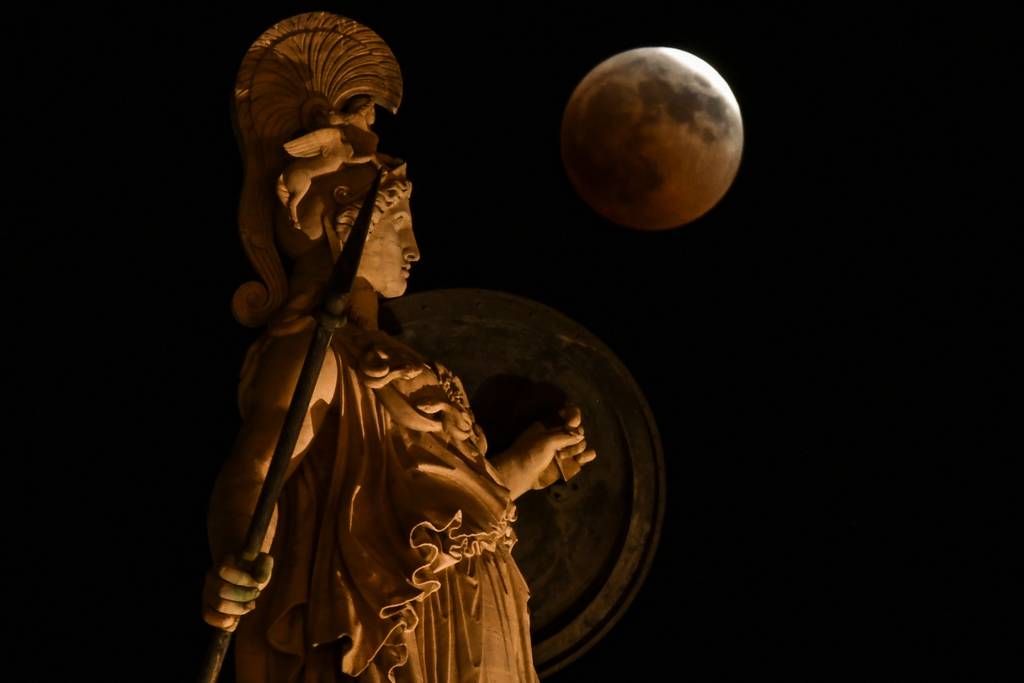
The stakes in the race to the moon are literally astronomical. The success or failure of the efforts by the United States, China, India and others to forge a permanent human presence on the moon will shape alliances, technologies and behaviors, thus establishing a precedence for future activities beyond Earth’s orbit and the terrestrial geopolitical landscape. As the United States, our allies and potential adversaries now look to establish a permanent human presence on the moon, the military must play a vital role.
As it has done multiple times in the past, the military will be critical in establishing the necessary infrastructure to support a burgeoning ecosystem. Some may argue this is a role for NASA, not the Department of Defense. Indeed, NASA is leading the way to returning astronauts to the moon. However, when it comes to establishing the necessary infrastructure to foster safe and secure commercial and civil growth, there are historical precedence, current operational imperatives and even existing statutes all demanding the DoD be integral to the future growth on the moon and surrounding region, known as the cislunar regime.
A lack of military involvement will slow U.S. progress in the race to the moon and place at risk national security, scientific and economic interests.
From the founding of the United States to the modern space age, there are numerous historical examples of military efforts paving the way for civil and commercial opportunities. In these cases, military involvement accelerated progress and opened new opportunities for subsequent scientific and economic ventures. Under the direction of President Thomas Jefferson, Capt. Meriwether Lewis and Lt. William Clark led the expedition blazing a trail for the western expansion.
The interstate highway system championed by President Dwight D. Eisenhower was in part to provide a means to support national defense requirements during the Cold War. The modern information highway of the internet started as a defense project in a predecessor organization to the Defense Advanced Research Projects Agency.
The space age itself became a reality thanks in part to the efforts of Gen. Bernard Schriever and his work to develop ballistic missiles, which became early rockets and launch range capabilities for NASA. This tradition continued with the development of the GPS constellation providing positioning, navigation and timing signals not just for the military but for users all over the world.
In many ways, the role of the military in the cislunar regime will be an extension of current U.S. Space Force and Space Command missions performed in geosynchronous orbit and below. In fact, the Space Force’s newly designated 19th Space Defense Squadron is already maintaining an initial level of awareness beyond geosynchronous orbit and into the cislunar regime. The military-provided space domain awareness critical to spaceflight safety around Earth will also be essential as humanity increases its presence in the cislunar regime — the space between the Earth and the moon.
Similarly, the aids to navigation and timing currently coming from GPS can also be established near the moon to provide astronauts and robotic missions with a common reference for safer cislunar travel. Further, satellite communication remains a cornerstone mission of the military, and a robust communication architecture will also be required to transmit scientific data, direct robotic missions and connect people on Earth with people on the moon.
Finally, as the cislunar ecosystem grows, so will the national interests in that region — national interests the military must be ready to protect and defend. The National Defense Authorization Act signed in 2019 established the Space Force and directed the service with the responsibility to “protect the interests of the United States in space.” To do this, the Space Force must organize, train and equip forces for Space Command to employ in monitoring activities, tracking natural and adversary threats, and responding appropriately.
Just as the U.S. Air Force helps to maintain freedom of the sky, the Space Force will maintain freedom in space from low Earth orbit to cislunar space and beyond as national interests expand further into space. By being a leader in the establishment of a cislunar infrastructure, the military is also establishing the foundation to accomplish its assigned duty.
In collaboration with NASA, the DoD is taking a few first steps to explore infrastructure opportunities beyond the nascent domain awareness operations currently executed by the 19th Space Defense Squadron. As will be detailed in an upcoming Mitchell Institute report, these are early steps in what must become a larger and more robust enterprise.
DARPA has kicked off a study examining infrastructure efforts needed in the next 10 years to facilitate scientific and economic activities in the cislunar regime. The LunA-10 study explores multiple areas necessary to sustain a growing cislunar ecosystem, including construction, mining, transit, energy, communication and navigation.
Together, LunA-10; DARPA’s DRACO mission, or Demonstration Rocket for Agile Cislunar Operations, examining nuclear propulsion for cislunar operations; and the Air Force Research Laboratory’s Oracle mission fielding a space domain awareness spacecraft in the cislunar regime highlight the military’s interest in cislunar space. Given development timelines and additional complexities of operations in the cislunar regime, the next steps must begin soon.
For historic, mission and statutory reasons, it is essential for the military to be an integral part of the return to the moon. Activities like the 19th Space Defense Squadron, LunA-10, DRACO and Oracle are just the initial steps to advance thinking and mature technology. In close coordination with NASA and commercial cislunar ventures, these early steps will ultimately transition to Space Force programs, Space Command capabilities, and essential elements of the growing peaceful, transparent and cooperative cislunar ecosystem.
Charles Galbreath is a senior resident fellow at the Mitchell Institute for Aerospace Studies. A retired U.S. Space Force officer, he previously served as the deputy chief technology and innovation officer on the service’s headquarters staff.
- SEO Powered Content & PR Distribution. Get Amplified Today.
- PlatoData.Network Vertical Generative Ai. Empower Yourself. Access Here.
- PlatoAiStream. Web3 Intelligence. Knowledge Amplified. Access Here.
- PlatoESG. Carbon, CleanTech, Energy, Environment, Solar, Waste Management. Access Here.
- PlatoHealth. Biotech and Clinical Trials Intelligence. Access Here.
- Source: https://www.defensenews.com/opinion/2023/09/22/why-the-military-is-integral-to-americas-return-to-the-moon/
- :has
- :is
- :not
- 10
- 2019
- 70
- a
- accelerated
- accomplish
- Act
- activities
- Additional
- advance
- advanced
- Aerospace
- age
- agency
- agile
- aids
- AIR
- Air Force
- All
- Alliances
- already
- also
- an
- and
- appropriately
- architecture
- ARE
- areas
- argue
- Army
- around
- AS
- assigned
- At
- authorization
- awareness
- BE
- became
- become
- begin
- being
- below
- between
- Beyond
- BLAZING
- but
- by
- CAN
- capabilities
- cases
- championed
- chief
- China
- civil
- Close
- cold
- collaboration
- comes
- coming
- commercial
- Common
- Communication
- complexities
- Connect
- construction
- continued
- cooperative
- coordination
- cornerstone
- critical
- Current
- Currently
- darpa
- data
- Defense
- Defense Advanced Research Projects Agency
- demanding
- Department
- department of defense
- deputy
- designated
- detailed
- develop
- Development
- direct
- directed
- direction
- do
- DoD
- domain
- done
- during
- Early
- earth
- Economic
- ecosystem
- efforts
- elements
- energy
- Enterprise
- essential
- establish
- established
- establishing
- establishment
- Even
- Examining
- examples
- executed
- existing
- Expand
- expansion
- explore
- explores
- extension
- facilitate
- fact
- Failure
- fellow
- few
- First
- first steps
- For
- Force
- Forces
- forge
- Foster
- Foundation
- founding
- Freedom
- from
- further
- future
- future growth
- Gen
- geopolitical
- given
- gps
- Growing
- Grows
- Growth
- he
- Headquarters
- helps
- Highlight
- Highway
- his
- historic
- historical
- However
- HTTPS
- human
- Humanity
- images
- in
- Including
- Increases
- india
- information
- Infrastructure
- initial
- Innovation
- Institute
- integral
- interest
- interests
- Internet
- into
- involvement
- IT
- ITS
- itself
- jpg
- just
- known
- Lack
- landscape
- larger
- launch
- leader
- leading
- Led
- Level
- Lewis
- like
- Look
- Low
- maintain
- maintaining
- many
- mature
- May..
- means
- Military
- Mining
- missiles
- Mission
- missions
- Modern
- monitoring
- Moon
- more
- multiple
- must
- Nasa
- nascent
- National
- national security
- Natural
- Navigation
- Near
- necessary
- needed
- New
- newly
- next
- now
- nuclear
- numerous
- of
- off
- Officer
- on
- opened
- operational
- Operations
- opportunities
- or
- oracle
- Orbit
- organization
- Others
- our
- over
- part
- past
- Paving
- People
- performed
- permanent
- Place
- plato
- Plato Data Intelligence
- PlatoData
- Play
- positioning
- potential
- predecessor
- presence
- president
- previously
- Programs
- Progress
- projects
- propulsion
- protect
- provide
- providing
- Race
- range
- ready
- Reality
- reasons
- regime
- region
- remains
- report
- required
- Requirements
- research
- responding
- responsibility
- return
- returning
- Risk
- robust
- rocket
- Role
- s
- safe
- safer
- Safety
- satellite
- scientific
- secure
- security
- senior
- service
- Shape
- signals
- signed
- sky
- slow
- So
- some
- Soon
- Space
- Space Force
- spacecraft
- spaceflight
- Staff
- States
- Steps
- studies
- Study
- subsequent
- success
- support
- Surrounding
- taking
- Technologies
- Technology
- terrestrial
- thanks
- that
- The
- The Future
- the world
- There.
- These
- Thinking
- this
- threats
- Thus
- timelines
- times
- timing
- to
- Tracking
- tradition
- trail
- Train
- transit
- transition
- transmit
- transparent
- travel
- u.s.
- U.S. Air Force
- U.S. Space Force
- Ultimately
- under
- United
- United States
- upcoming
- users
- Ventures
- vital
- war
- was
- Way..
- ways
- Western
- What
- when
- which
- why
- will
- william
- with
- Work
- world
- years
- zephyrnet

